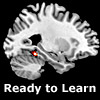
Session Overview
 |
How do we learn? How do the things we learn help us to survive and successfully interact with our environment? In this session, we will examine different types of learning, from classical conditioning to more complex models of learning, and how they fit into our everyday lives. Related concepts like learned helplessness and delayed gratification will also be examined. Keywords: classical conditioning, operant conditioning, Ivan Pavlov, extinction, generalization, Little Albert, learned helplessness, E. L. Thorndike, delayed gratification Courtesy of Julie Yoo. Used with permission. |
Session Activities
Readings
Read the following before watching the lecture video.
- One of the following textbook chapters:
Lecture Videos
View Full Video
- Lecture 9: Learning (00:46:43)
View by Chapter
- Pavlov and Learning Through Conditioning (00:11:18)
Pavlov and Learning Through Conditioning
> Download from iTunes U (MP4 - 116MB)
> Download from Internet Archive (MP4 - 116MB)
- Operant Conditioning, Thorndike's cat, and Little Albert (00:07:05)
Operant Conditioning, Thorndike's cat, and Little Albert
> Download from iTunes U (MP4 - 116MB)
> Download from Internet Archive (MP4 - 116MB)
- Reinforcement and Learned Helplessness (00:08:19)
Reinforcement and Learned Helplessness
> Download from iTunes U (MP4 - 116MB)
> Download from Internet Archive (MP4 - 116MB)
- Limits of Conditioning (00:06:18)
- Reward Value and Delayed Gratification (00:07:39)
Reward Value and Delayed Gratification
> Download from iTunes U (MP4 - 116MB)
> Download from Internet Archive (MP4 - 116MB)
- Is Language Learning a Conditioned Skill? (00:03:02)
Is Language Learning a Conditioned Skill?
> Download from iTunes U (MP4 - 116MB)
> Download from Internet Archive (MP4 - 116MB)
Video Resources
Discussion: Learning
Habituation is when repeated exposure to a stimulus decreases an organism's responsiveness to the stimulus. What are some things in life that we experience over and over again and react less and less to? What's an example of habituation in real life?... Read more »
Check Yourself
Example 1:
In a study by Lewicki (1985) students had a brief interaction with a female experimenter that had short hair and glasses. After the students asked the experimenter a question she responded either in a negative way or a neutral way. Afterword the students had to approach one of two other experimenters in a different room. One experimenter shared more physical characteristics with the first experimenter and the other shared fewer characteristics with the first experimenter. Students were more likely to avoid the experimenter ion the second room that resembled the first when the first responded negatively to their question.
Example 2:
In the case of Pavlov's dog, the dog learned to salivate when the dog heard a specific tone, but not similar tones that were never directly associated with food. Name and explain the two psychological processes that describe the situation in both example studies. Come up with another example of each of the two psychological processes.
› Sample Answer
Further Study
These optional resources are provided for students that wish to explore this topic more fully.
| TYPE | CONTENT | CONTEXT |
|---|---|---|
| Supplemental reading | An online version of Thorndike, E. Animal Intelligence: Experimental Studies. The Macmillan Company, 1911. Accessed via "Classics in the History of Psychology" by C. Green. | Book written by Thorndike touching on several topics discussed in lecture |
| Textbook supplement | Study materials for Ch. 6 "Learning: How Experience Changes Us." In Kosslyn & Rosenberg, Psychology in Context, 3/e (Pearson, 2007) | Practice test questions, flashcards, and media for a related textbook |
